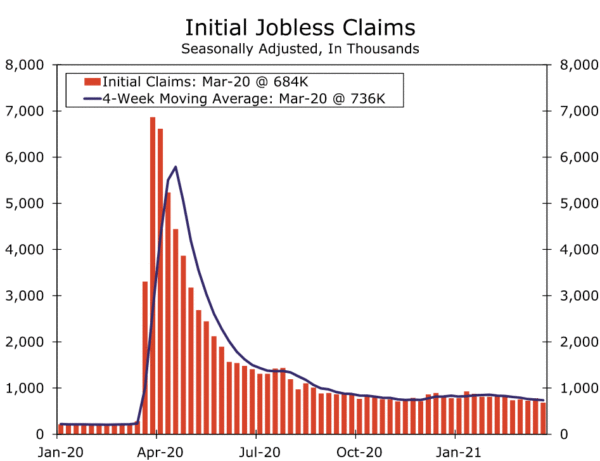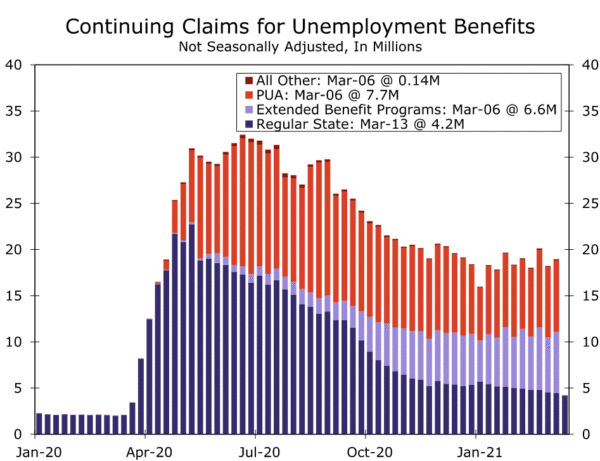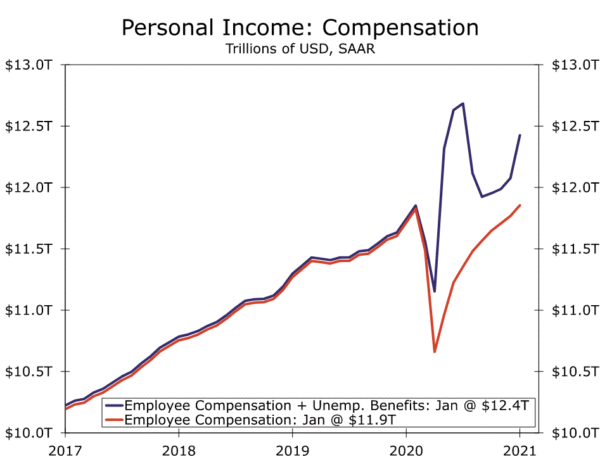In a sign that the jobs recovery is gathering pace, initial claims tumbled last week to 684K, a fresh pandemic low. While the ranks of beneficiaries remain staggeringly high at 19 million, the unemployment benefits flowing to these individuals is just another example of the significant income support to households this cycle that has kept consumer spending relatively buoyant.
Still Elevated A Year On, But a Definitive Step in the Right Direction
It was a year ago this week that the economic carnage of the COVID pandemic started to become clear. Initial weekly filings for unemployment shot up to 3.31 million, five-times the level of the worst week of the Great Recession. Filings rocketed even higher the following week, reaching 6.87 million, and have stayed above the peak of the Great Recession ever since.
Level comparisons are admittedly somewhat unfair. The workforce was 9% larger in 2019 than in 2007 ahead of the past downturn. At the same time, the speed and breadth of the crisis overwhelmed states’ systems and led to some repeat filings. States have also highlighted issues with fraudulent claims.
That said, the direction and magnitude of weekly claims continue to hold clues about the recovery. To that end, claims tumbled by 97K to a 52-week low of 684K. The sharp drop came on the heels of an unexpected and upwardly revised figure of 781K the prior week. Through weekly volatility, however, the trend remains firmly, albeit slowly, downward. The four-week moving average fell by 13K to hit a fresh cycle low.
Claims Recipients Stubbornly High
While this week’s claims figures show conditions improving, the initial damage brought on by COVID lingers. About 4.5 million individuals continue to collect regular unemployment insurance, while another 6.6 million are collecting extended benefits, including through programs such as the Pandemic Emergency Unemployment Compensation program. On top of those programs for individuals with more traditional work arrangements, another 7.7 million continue to collect benefits through the Pandemic Unemployment Assistance (PUA) program. As of March 6, the most recent week that data are available for all programs, 19 million individuals were receiving benefits.
One More Source of Significant Income Support this Cycle
The PUA was aimed to help meet the unique challenges of COVID as well as the evolving structure of employment for many, including gig work. While that program in particular has raised eyebrows over abuse, the new program and supplementary weekly benefits for all programs have been one more avenue of significant income support this cycle. Despite 9.5 million fewer jobs in the economy since COVID, “labor” income, including the value of unemployment benefits, is up 4.8% since February of last year.















